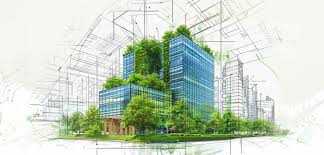Climate change is one of the most pressing issues a construction sites. On construction sites, where materials are everywhere lying in the open air, some of them are in use, and some of them are not. However, Sudden climate changes can affect them and there are more chances of material waste due to weather. Now, the question is how to handle these situations. So, for this, not much but effective construction project management skills are required. In which the construction contractors and the builders can play a role. However, the homeowners must be responsible for managing the situation in uncommon weather conditions. All these entities can seek help from construction estimating servicesto mitigate the impact of weather on construction practices.
Here in this article, we have elaborated some of the most useful tips and tricks that can help you reduce the impact of climate change on construction practices.
Changing Weather Patterns
The increasing unpredictability of weather patterns is one of the most immediate effects of climate change on construction. For example, extreme heat, heavy rainfall, hurricanes, and flooding can disrupt construction schedules and increase project costs. For instance, heavy rains can delay concrete pouring or site preparation, while high temperatures may require special measures to protect workers and materials.
Material Selection and Sustainability
In response to climate change, there is something switch we can do to save our projects and material loss. For example, we can make wise decisions while choosing the material for construction. Those materials have the least effect on these weather conditions but equally a perfect role in the construction of the building. Examples of these materials are; bamboo, recycled steel, and engineered wood products. These materials are not only sustainable but also cost-effective. However, for more accurate cost estimates, you can get help from construction cost estimating services.
Energy Efficiency and Green Building
Now the whole construction industry is focusing more on the use of energy-efficient resources throughout the project. These practices are a great source of economic useful and promote green building practices. Modern building codes are also incorporated with these renewable energy resources such as the use of solar panels, the use of wind turbines, etc. These points lead to the concept of green building which promotes those designs that minimize energy consumption and reduce environmental impacts.
Resilience and Adaptation
As climate change leads to more frequent natural disasters, the need for resilient infrastructure becomes paramount. The construction practices must be adapted to incorporate this resilience into design and materials. These practices may include:
- Flood-prone areas
- Make hurricane-resistant designs
- Weather withstand infrastructure
However, the construction contractors and the construction project owners must be aware of the climate risk assessment methods to plan better and save the integrity of their project. Knowing the effect of weather on different types of construction materials is also very crucial. For this, an authentic construction takeoff services company can help to analyze material estimates and how to use them wisely to stay aware of climate risks.
Regulatory Changes
Governments worldwide are implementing stricter regulations to combat climate change, directly affecting construction practices. Building codes are becoming more rigorous, requiring energy-efficient designs and sustainable practices. In these situations, if you fail to comply then you may encounter many significant penalties and project delays. As a result, your project will go into a loss and this is not something that you want as a construction contractor or project owner. So stay ahead of regularity changes and consult with some construction estimations first (World Estimating) to remain competitive in the construction industry.
Workforce Training and Safety
The impacts of climate change also extend to workforce training and safety protocols. As weather conditions become more extreme, the construction workforce must be trained to handle new risks. This includes understanding the safety measures necessary during extreme heat or storms and being equipped with the knowledge to implement sustainable practices effectively.
Conclusion
The impact of climate change on construction practices is profound and multifaceted. As the industry grapples with these challenges, a shift towards sustainable materials, energy efficiency, resilience, and regulatory compliance is essential. Embracing innovative practices not only mitigates environmental impacts but also ensures that the construction sector remains viable in a changing world. As we look to the future, the ability of construction professionals to adapt will play a critical role in building a sustainable and resilient built environment.

